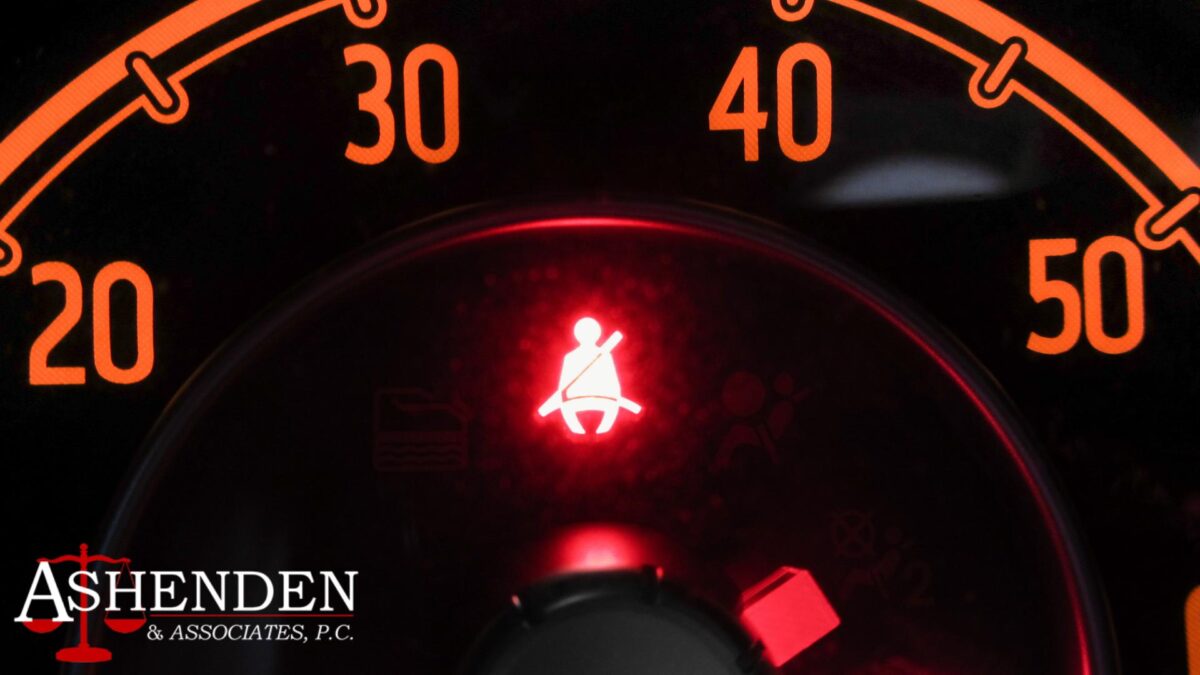A seat belt or safety belt is a safety feature that can help save lives and prevent additional injuries by securing drivers and passengers in place during motor vehicle crashes, preventing them from being ejected or thrown around inside the vehicle in the event of a car crash. However, even though seat belts are essential, they can sometimes lead to a condition known as seat belt syndrome. This occurs when the strong force of a collision causes the seat belt to press forcefully against the abdominal wall, leading to injuries such as intestinal injuries, internal organ damage, and even blunt force trauma for car accident victims. The presence of seat belt marks across the lower abdomen, which is indicative of seat belt syndrome, may indicate missed intestinal injuries or other internal injury or damage to internal organs that require immediate medical attention for physical examination.
Seat belt syndrome is particularly concerning because the force exerted by the safety belt can cause additional injuries, such as abdominal injury, to both the driver and the passenger. This is especially true if the lap belt is worn incorrectly or if a child is not properly secured in a booster seat. While seat belt use is required by Georgia law and is a key factor in reducing fatalities during a motor vehicle crash, it is important to recognize the potential for seat belt injuries and seek compensation if you have been affected. Sandy Springs personal injury attorneys are well-versed in handling cases related to seat belt syndrome and can help you pursue the compensation you deserve. If you or a loved one has suffered from seat belt syndrome or any related injuries, contacting a Sandy Springs car accident lawyer can be the first step toward recovery. Don’t hesitate to schedule a free consultation to discuss your case and ensure that your rights are protected.

History of Seat Belt Usage in the U.S.
Seat belts were invented in 1894, but the lap belt didn’t become standard in vehicles until 1964. In 1973, the three-point harness replaced the lap belts. This is the seat belt we know and use today. This upgrade resulted in an almost 50% decrease in fatal injuries from car accidents. While seatbelts have been proven to lower the risk of death, in 2009 alone, 53% of people involved in fatal car accidents were not wearing seatbelts.

How Many States Enforce Seat Belts?
Other than New Hampshire, all states and the District of Columbia require all front-seat occupants to wear seat belts. Also, in 32 states and the District of Columbia, adult back-seat passengers are covered by different laws. There are separate seat belt laws that protect children.
Primary enforcement laws give police officers the right to stop and ticket anyone riding or driving in the front seat that isn’t wearing a seat belt. Currently, primary enforcement is carried out in 34 states and the District of Columbia. These primary enforcement laws are working. As of 2021, front-seat occupants using seat belts was five percent higher in states with primary enforcement than in states that did not enforce it, according to the National Center for Statistics and Analysis 2021.
Secondary enforcement is only recognized in 15 states for front-seat occupants, while 11 states recognize it for back-seat passengers. Secondary enforcement only allows police officers to ticket a person if they aren’t wearing a seat belt as long as they have been pulled over for another offense first.
Does Georgia Have Primary Enforcement or Secondary Enforcement of Seat Belts?
As of September 1996, Georgia began enforcing primary enforcement laws. These laws cover passengers ages 8 to 17 in all seats and 18 and over in the front seat.

What is Seat Belt Syndrome?
Seat belt syndrome, also known as seatbelt injury, is a group of common injuries one can sustain while wearing a seatbelt during a car accident. The seat belt itself can cause a significant force to be applied to the body, which can cause injuries like rib fractures, internal organ damage, and spinal cord injuries. The severity of the injuries can vary depending on the force of the collision, the speed at which the vehicle is traveling, and the positioning of the seatbelt.
Seatbelt injuries can life-threatening, latent injuries. If you suspect you have been injured from wearing a seat belt, seek immediate medical attention. Wearing a seatbelt while driving or riding in the car is always important, as it can significantly reduce the risk of injury or death.
The body parts that can be most affected by seat belt injuries are:
- Kidneys
- Stomach
- Bladder
- Bowels
- Colon
- Spine
How Common are Seat Belt Syndrome Injuries?
Around 30% of car accident passengers are treated in hospitals for internal injuries caused by seat belt-related injuries.

Seat Belt Syndrome Symptoms
If you suspect that you’ve sustained seat belt-related injuries, one of the first signs to look for is the seat belt sign, which is characterized by abdominal pain and bruising around the abdomen in the shape of a seat belt. It can be difficult to know what injuries have occurred until the symptoms begin to appear. If you start to notice the following symptoms, seek medical attention immediately.
- Chest pain
- Difficulty breathing
- Blood in urine or stool
- Dizziness
- Abdominal pain
- Weakened legs
- Coughing and vomiting blood
- Bruised ribs
- Bruising in the shape of a seat belt
Diagnosing Seat Belt Syndrome
A seat belt injury can be diagnosed with X-Rays or C.T. scans. It’s essential to seek medical attention as soon as you suspect seat belt injuries since they are not always visible and can be life-threatening, like serious abdominal injuries and bowel perforations.
FAST, focused abdominal sonography trauma, is a medical scan that shows internal bleeding around the abdomen. It can notify doctors of severe internal injuries.
The most common seat belt injuries are:
- Internal organ damage
- Spinal injuries
- Broken bones
- Incapacitating injuries
- Shoulder injuries
- Bruising and abrasions
- Abdominal injuries
- Vascular injuries

Seat Belt Syndrome Treatment
Depending on how severe the injuries are will determine the type of treatment you receive. Some minor seat belt injuries can result in visits to a pain management doctor or physical therapist to assist in the healing process. More serious seat belt injuries may require surgery and lengthy recovery periods that could place you in an extended-stay care facility.
Paying for treatment because of injuries that were caused by someone else’s negligence should not be your burden. It’s important to seek legal representation so that you can receive damages for medical bills and other medical treatments.
Can You Sue for Seat Belt Syndrome?
If you or a loved one received seat belt injuries from a car accident that was not your fault, you could be eligible to receive financial compensation. Following the accident, it’s important to keep all records relating to the accident itself, like police reports, as well as medical records and billing. These documents will help your attorney as they prove that negligence caused seat belt-related injuries.
Compensation for Seat Belt Injuries in Motor Vehicle Accidents in Georgia
You could be entitled to damages if you were injured from a seat belt during a motor vehicle accident caused by someone else’s negligence. At Ashenden & Associates, our experienced personal injury attorneys will seek compensation for the following types of damages:
- Medical expenses
- Lost wages
- Property damage
- Pain and suffering
- Mental anguish
- Loss of enjoyment of life

Sandy Springs Seat Belt Syndrome Lawyer
Any injury caused by the negligence of another can cause you immense mental stress and create a huge financial burden, whether it’s from seat belt syndrome, airbag injuries, broken bones, etc. Not only do you miss work while recovering from your injuries, but medical bills can add up quickly, not to mention the damages to your vehicle. If you or a loved one became injured from a seat belt during a car accident that wasn’t your fault, you could be entitled to damages. It’s not fair for you to carry the burden alone. Call Ashenden & Associates today at (770) 394-8909 to schedule your free consultation.
